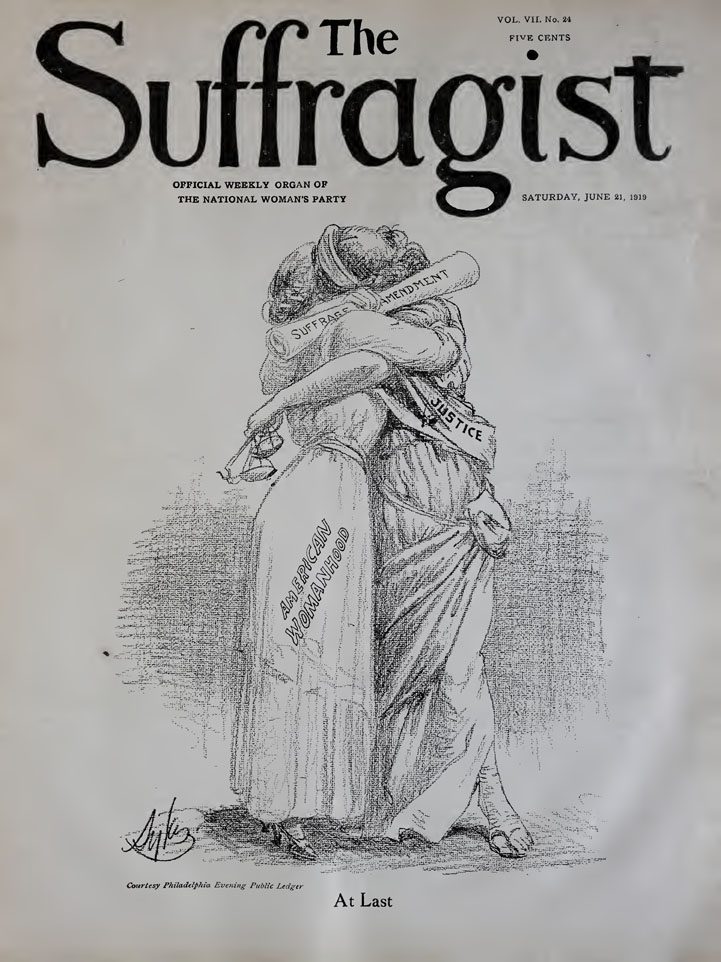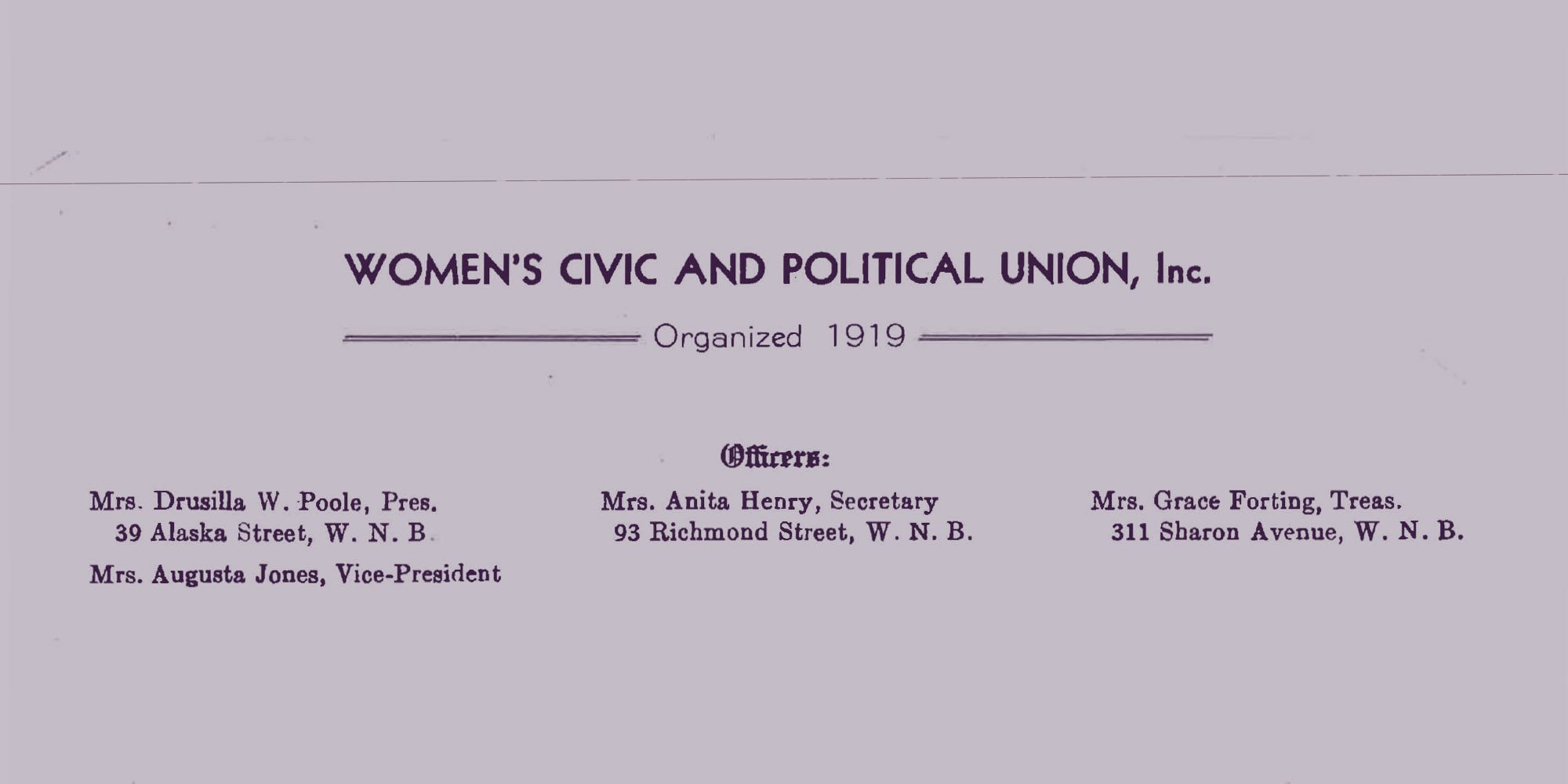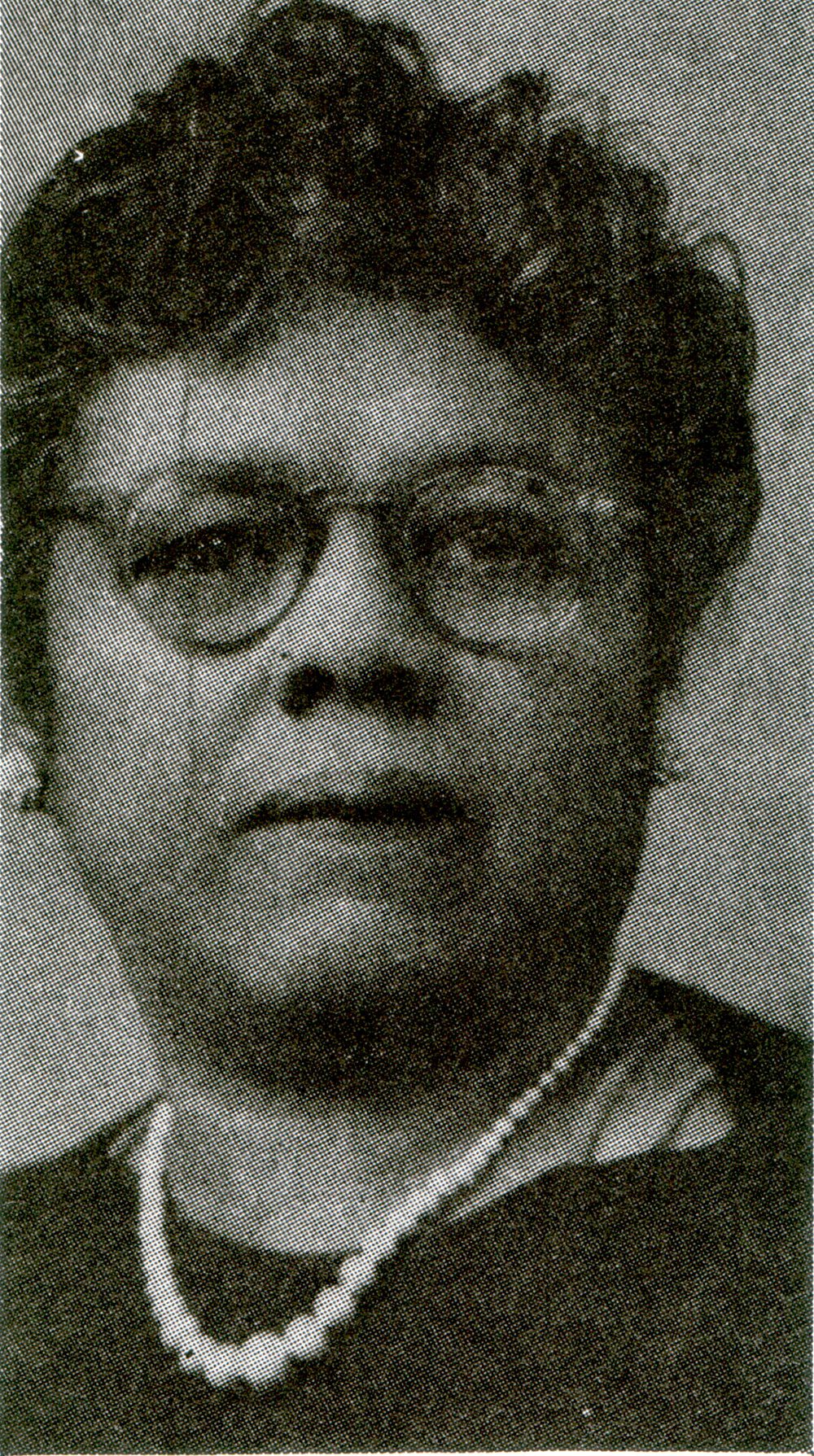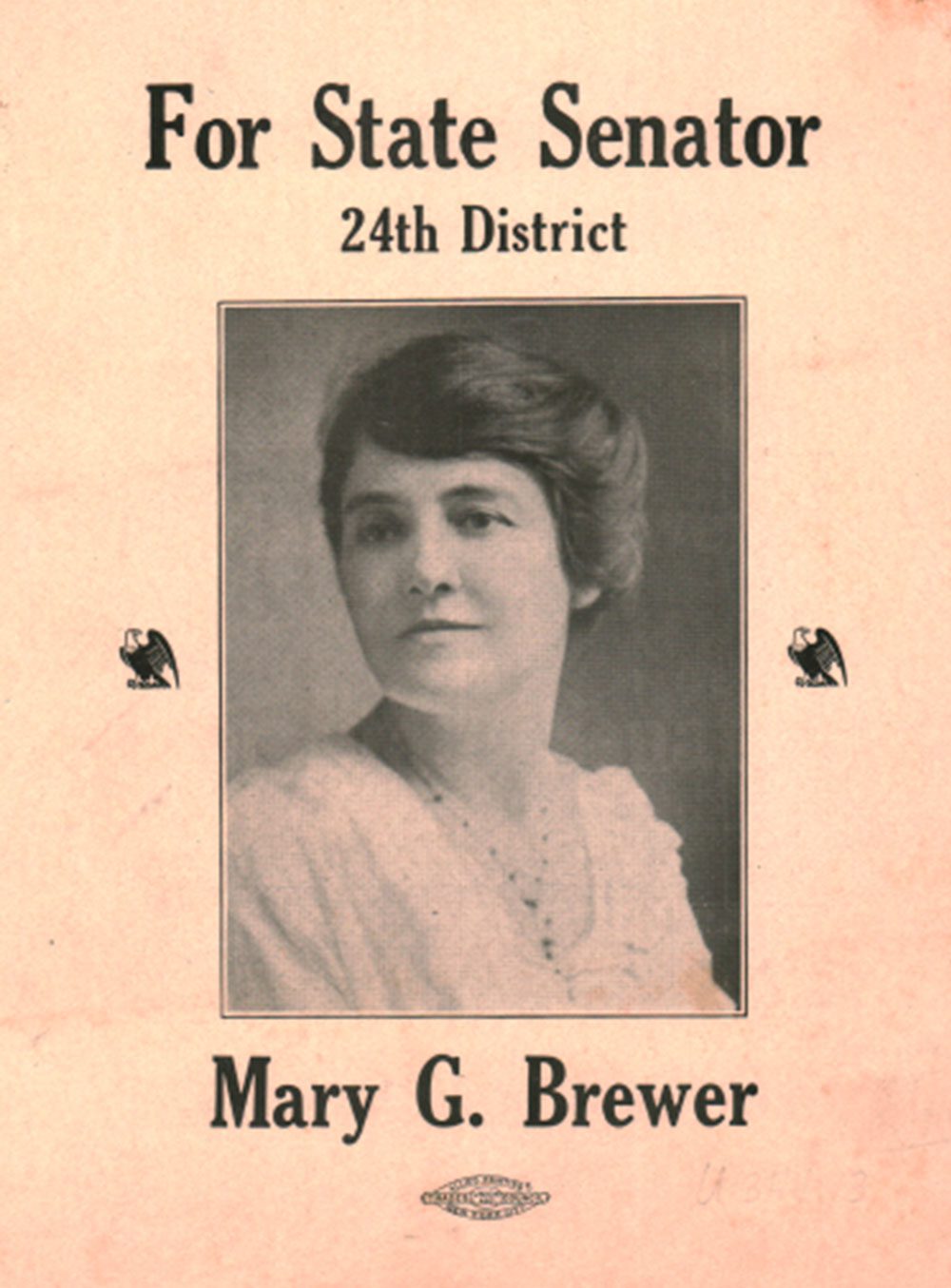Women of the Nation Arise!
Staten Islanders in the Fight for Women’s Right to Vote
Acknowledgements ResourcesVote
Empowered by state and federal legislation that gave millions of new women voters access to the polls, women participated at all levels of government. Still, because individual states could affect local voting laws, discrimination based on race, class, and ethnicity kept millions more Americans from voting for another forty-five years.
The effort to achieve equitable access and representation continues to this day.
[Election Day] is your day to write clearly on the pages of history: ‘This is the way I want my City, my State, my Country to be run.’
– Women's Civic and Political Union

Collection of the Staten Island Museum
After the Amendment
After the vote passed, organizations that campaigned for woman suffrage focused their energy on teaching women about their new rights. In 1919, the New York Woman Suffrage Association became the New York League of Women Voters, a non-partisan organization with civic education as their main mission, and many Staten Island suffragists remained involved. The exclusion of women of color carried over to the new group. On Staten Island, activist women of color, including Drusilla Poole of Shiloh AME Zion Church, stepped in to fill this gap in educational resources. They founded the Women’s Civic and Political Union, an organization with the goal of teaching African American women about politics and encouraging them to exercise their right to vote.
The 19th Amendment granted women equal suffrage, but that did not ensure equal treatment under the law. Suffragists Alice Paul and Crystal Eastman began a new campaign for the Equal Rights Amendment (ERA), which proposed to guarantee equal rights to all Americans regardless of sex. Proponents of the ERA continue to argue that without this explicit protection of women’s rights, courts and legislatures can undo protections for women’s work, wages, and property. Introduced in 1923, the ERA passed Congress almost fifty years later in 1972, but the movement to ratify the amendment is still ongoing.


Shiloh AME Church Bulletin, November 30, 1980 Courtesy of Debbie-Ann Paige
Drusilla Poole (1883-1972)
Drusilla Poole was born in Washington D.C, the third of seven children. She married Archibald Poole and moved with him to his hometown of Staten Island at the close of the 1910s. She worked for many years as a secretary to the William A. Morris Moving Van Line company and became deeply involved with Shiloh AME Zion Church. She was a leader in the community and an active member of the National Association of Colored Women, Urban League, Empire State Federation of Women’s Clubs, Inc., and Helping Hand Society. She was founding Secretary of the NAACP’s Staten Island Chapter and served as President of the Women’s Civic and Political Union through the 1930s.
Read selected papers of the Women’s Civic and Political Union from the Museum’s collection here.
Women in Government
Some women took civic participation to an even higher level, running for local, state, and federal elective office. Suffrage leader Mary Grey Brewer ran for State Senate in 1918. That same year, Staten Islander Elinor Byrns ran for the United States Congress as a Socialist and Ella Reeve Bloor, originally of Mariner’s Harbor, ran for Lieutenant Governor of New York. In 1920, Ella Boole of Westerleigh ran for a United States Senate seat on the Prohibition Party ticket, and Lucy J. Kipper ran to represent the Island in the New York Assembly. While the women from Staten Island who ran for office did not fare well in the early years, some did serve the government in appointed roles. In fact, Josephine Shaw Lowell was appointed Commissioner of the New York State Board of Charities in 1876, even before women had the right to vote.
Elizabeth Connelly became the first woman elected to public office on Staten Island when she won her campaign for the New York State Assembly in 1973. Four years later, Democrat Mary Codd was elected Staten Island’s first female City Council representative. In 1981, she became the first woman to run for Mayor of New York City on a major party ticket. In 1990, Republican Susan Molinari took office as Staten Island’s first and only female U.S. Congressional Representative.
Today, women occupy between 20 and 30 percent of elective legislative or executive offices at the local, state, and federal levels. Of Staten Island’s twelve legislative representatives, four are women: Senator Kirsten Gillibrand, State Senator Diane Savino, Assembly Member Nicole Malliotakis, and City Council Member Debi Rose. Of the island’s eleven executive officers, two are women: Lieutenant Governor Kathy Hochul and Attorney General Leticia James. Debi Rose and Leticia James made history as the first people of color elected to their roles. Many women also serve in appointed government positions and make up thirty-seven percent of judges in New York’s State Courts.

Flyer, 1918 Collection of Staten Island Museum
Mary Grey Brewer (1875 – 1950)
In 1918, Mary Brewer became the first woman on Staten Island to run for office on a major party ticket. She beat a male opponent to win the Republican nomination for a State Senate seat representing Richmond and Rockland Counties. She was in favor of prohibition and improved roads and against the proposed landfill on Staten Island. She hoped that her fellow suffragists would unite to put her in office, but she could not overcome the conservative Democratic leanings of 1910s Staten Island.

Voting Rights Today
In the hundred years since the ratification of the 19th Amendment, election laws and judicial rulings in New York and across the country have created and eliminated barriers to voting.
In 1921, New York passed a law requiring new voter registrants to take a test proving their English literacy. In doing so, New York joined a group of states with voting laws that kept immigrants and voters of color from the polls. In 1965, Congress passed the Voting Rights Act, striking down the “Jim Crow” which enforced racial segregation and kept Black voters from the polls. The Voting Rights Act forbade states to create discriminatory barriers to voting and required jurisdictions with a history of discrimination to get federal approval for changes to their election laws. In 2013, the Supreme Court’s decision in Shelby County v. Holder struck down this provision, opening the door for new barriers to voting, including voter ID laws, and limits to voter registration that disproportionately affect marginalized groups.
More recently, voting rights advocacy groups, including the League of Women Voters, have sought to curb the practice of partisan gerrymandering whereby majority parties manipulate the boundaries of voting districts to limit the voting power of people with opposing political views and ultimately retain control. In 2019, the Supreme Court decided in Rucho v. Common Cause to defer efforts to regulate redistricting to state governments and Congress, leaving these issues to be resolved by legislative means. While the question of redistricting remains open nationally, advocacy groups have had some victories in New York State. Within the last decade, New York voters have amended the state constitution to create an Independent Redistricting Commission and to implement early voting so that voters have more opportunities to get to the polls prior to election day.
Passing the Torch: Women Who Lead
This film features women currently representing Staten Island in government roles.
Interviewees:
Kirsten Gillibrand, United States Senator for New York
Kathy Hochul, Lieutenant Governor of New York
Letitia James, Attorney General of New York
Diane J. Savino, New York State Senator
Judith N. McMahon, New York Supreme Court Judge
Nicole Malliotakis, New York State Assemblywoman
Edwina Frances Martin, Esq., Richmond County Public Administrator
Patricia Anne Taylor, Richmond County Board of Elections Commissioner
Director: Rachel Caccese
Director of Photography: Mike Byrk
Produced by the Staten Island Museum, 2020








